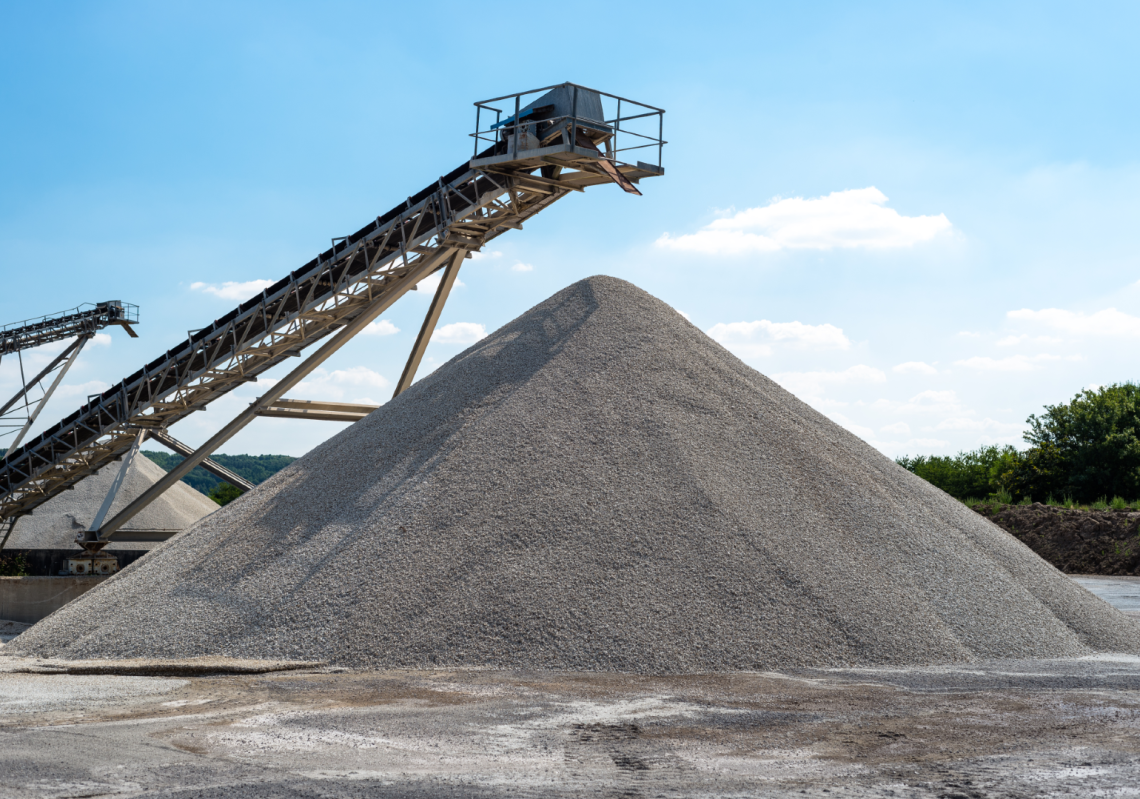A more environmentally friendly cement promises to be a game changer for the construction industry.
When construction materials supplier Adbri decided to set a goal of net zero carbon emissions by 2050, it had to tackle reductions of one of the most emissions-intensive materials on earth: cement.
Accounting for around eight per cent of annual carbon dioxide emissions — far more than those from aviation — cement’s carbon-intensive manufacturing process largely comes from its clinker content.
“Clinker is a material that’s produced in a very large rotary kiln at high temperatures involving complex reactions, including the release of carbon dioxide through the calcination of limestone,” David Farah, Group Manager — Quality & Innovation at Adbri, told create.
“A key lever to improve the embodied carbon of cement is to reduce the amount of clinker used.”
This idea gave rise to EvoCem, a new, low-carbon cement.
EvoCem is a Type GL general purpose limestone cement that is being produced by Adbri, including at its cement plant outside of Darwin.
“General purpose cement typically contains up to seven per cent limestone mineral addition, about five per cent gypsum and the [rest] is clinker,” Farah explained.
“EvoCem cement is around 15 per cent limestone, five per cent gypsum, and 80 per cent clinker — so we’ve reduced the amount of embodied carbon by up to eight per cent, a fact which has been verified in our environmental product declarations.”
In developing a new cement product, Farah said that Adbri had to “bite the bullet” and overcome a number of important engineering challenges.
“It’s not as simple as just taking out clinker and putting in more limestone,” he said. “There is some real technical know-how in terms of ensuring that the EvoCem product provides equivalent performance to type GP cement, given its lower clinker content.
“Clinker is the reactive part of the cement, so we’ve actually had to do some innovative work in order to produce this product — and we’re really proud of our achievements.”
Value proposition
Type GP cement is the predominant cement used in almost all concrete mixes, which accounts for around 10 to 15 per cent of concrete end product by volume.
Adbri supplies cementitious binders to some of Australia’s largest mining companies in South Australia and Western Australia. To help customers understand how EvoCem can serve as a decarbonisation lever, Adbri has recently been on a roadshow to encourage mining industry engineers to adopt the new product.
For a long time, the industry has considered approaches for developing less emission-intensive cement that meets standards, Farah said, because of the logistical challenges of having GP and GL cement coexisting.
Significantly, Farah said that EvoCem has no trade-offs to the more carbon intensive type of cement.
“The really important thing about EvoCem is that it offers equivalent performance to Type GP cement,” he said. “The mining industry is already showing interest in this to make a lower carbon shotcrete product, and demand is shaping through the concrete sector.”
Roading authorities, however, are typically more considered with their approach to adopt new products, even though EvoCem complies with AS3972, and when used in concrete, satisfies the performance requirements of AS1379 and AS3600.
It has also achieved independently verified EPDs to validate the carbon reductions.
“My value proposition is you are getting equivalent performance on GP cement on any measure that you want to analyse in concrete, but with the reduction in embodied carbon,” Farah said.
“Eight per cent might not sound like a lot, but when you consider that the Australian cement market is about 12 million t each year, this is a meaningful step in helping our customers reach their sustainability goals.”
Empowering regional Australia
Farah said that Adbri decided to trial the cement in the Northern Territory as EvoCem cement is a “natural fit” in the region’s harsh climate.
“EvoCem cement works well anywhere, but from a climate perspective, this type of cement works particularly well,” he explained.
For their cement manufactured in the Northern Territory, Adbri imports clinker and grinds it in a local cement mill with limestone and gypsum.
“The most immediate lever we have to reduce embodied carbon in cement is to introduce the additional limestone,” Farah said.
The product is manufactured using a highly specialised process involving optimisation of the cement particle size distribution, and the use of innovative cement improving additives.
Initially, EvoCem underwent laboratory trials, before scaling up to multiple industrial trials.
“It’s taken two years of really solid work to get to the point of being able to produce it commercially in regional Australia,” Farah said.
“We’re also the first local construction materials company to introduce this kind of product to the Australian market — and we’re now seeing validation that customers are seeking more sustainable cement choices.”



